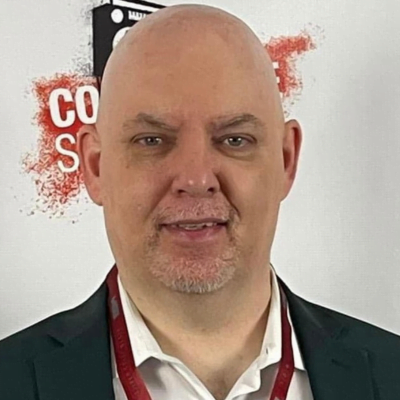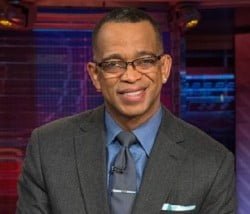As 3 p.m. hits each weekday, fans with an insatiable appetite for Indianapolis sports talk have choices.
Three local drive-time radio shows commence, each claiming to have a special recipe for success.
For the “Kent Sterling Show,” it’s all sports all the time, no veering into pop culture. On “The Ride” with JMV, Lady Gaga (and almost anyone else) is fair game. “Query & Schultz,” the only two-man show in the time slot, is somewhere in between with a twist — banter sparked by their differing viewpoints.
In the cutthroat industry of radio — which is battling a seemingly ever-increasing ocean of competing media from the Internet to iTunes to satellite radio — sports is as cutthroat as any genre.
How many people are listening to the local shows? In Indianapolis, the 40th largest among U.S. radio markets, JMV’s station leads the way. Nielsen audio rankings show WFNI (107.5 FM, 1070 AM) garnered a 3.8 rating in January. Query & Schultz’s WNDE (1260 AM) received a 0.4 rating and WXNT (1430 AM), where Sterling airs, finished the month with a 0.1 rating.
When it came to afternoon drive time ratings for individual shows, from 3 p.m. to 7 p.m., WFNI received a 4.2, WNDE a 0.6 and WXNT a 0.2.
In a market such as Indy, home to the Colts, Pacers, IU, Purdue and Butler, there is room for plenty of sports talk. But is there enough room for this much? Or is it just a matter of time until one falls off the airwaves?
“I think there’s room. I sure hope there is,” said Jeff Smulyan, founder and CEO of Emmis Communications, which owns WFNI. He’s also the man who invented the format, launching the first 24-hour sports talk station in New York in July 1987. “Ultimately, it’s up to what the audience wants.”
The hosts of the three shows say that there is a market for all to survive. All three shy away from talking ratings. In fact, all say that they don’t even consider one another competitors, and that the more high-quality shows there are, the better.
“That is smoke,” said Scott Bridge, internship director for the college of communication at Butler University, who teaches electronic journalism and sports broadcasting. “Everybody is being professional and that’s nice. But I think when behind closed doors, they want to kick each other’s asses.”
They are all trying to nab the biggest share they can of the sports talk radio pie in Indianapolis, appealing to an audience that is two-thirds men ages 25 to 54, according to Bridge’s research.
Sterling, who previously worked at WFNI and has been doing his show less than a year, delivers analysis to the diehard sports fan without references to what Lady Gaga did at the Academy Awards.
“We talk about sports. That’s just what I do best,” said Sterling, 52. “It wasn’t a competitive decision to do that. It’s just what I think this format does best and what listeners like best.”
JMV, who moved from WNDE to WFNI in 2010, mixes pop culture and some non-sports stories into talk about the games, teams and players. He wants to grab those listeners who want entertainment beyond sports.
“It’s like the Super Bowl,” said JMV, whose real name is John Gliva, 45. “They don’t have to have Katy Perry because people are going to watch, but I’m trying to get everybody into the club to hang out and have fun. It’s all about trying to fish for what is going to pull in and keep that person that maybe wouldn’t necessarily be listening, while also keeping that person that’s your top-level listener.”
“Query & Schultz,” which started in 2011, combine the two approaches while using the dynamic duo approach to banter, argue and make fun of each other.
“When you have two people, you have a greater opportunity of diversity of thought,” said Jake Query, 42. “One of the benefits of having a two-person show is Derek and I never intentionally disagree. We never pre-write who’s going to take what stance but, because we’re of different ages (Schultz is 11 years younger), because we’re of different backgrounds to an extent, I think that by and large people listening are going to have their opinion expressed.”
None of the hosts would comment on how successful their approach affects ratings. Some voiced concerns that the method Nielsen uses to measure audience listening is inaccurate and doesn’t tell the whole story.
Smulyan said it’s clear that JMV is running away with the sports talk market in Indianapolis.
The ESPN backing, radio signal strength and affiliation with the Colts, Indiana, Pacers and Butler give WFNI a decided advantage, Bridge said. (WNDE broadcasts Purdue.) He doesn’t believe that means the others can’t survive.
“People need their sports,” Bridge said. “We are a nation of rabid sports fans. I think they are always going to have an audience.”
Credit to the Indy Star who originally published this article

Jason Barrett is the President and Founder of Barrett Media since the company was created in September 2015. Prior to its arrival, JB served as a sports radio programmer, launching brands such as 95.7 The Game in San Francisco, and 101 ESPN in St. Louis. He also spent time programming SportsTalk 950 in Philadelphia, 590 The Fan KFNS in St. Louis, and ESPN 1340/1390 in Poughkeepsie, NY. Jason also worked on-air and behind the scenes in local radio at 101.5 WPDH, WTBQ 1110AM, and WPYX 106.5. He also spent two years on the national stage, producing radio shows for ESPN Radio in Bristol, CT. Among them included the Dan Patrick Show, and GameNight.
You can find JB on Twitter @SportsRadioPD. He’s also reachable by email at Jason@BarrettMedia.com.







